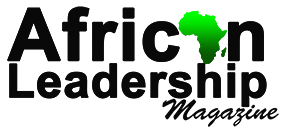Africa is undergoing an infrastructure revolution, a transformation reshaping its economic trajectory and development prospects. Roads are being paved where none existed, power grids illuminate once-darkened villages, and railways are stitching together fragmented economies. The continent’s urban skylines are evolving, a testament to its commitment to modernisation. Yet behind the steel and concrete, a fundamental question looms: Who is financing this boom?
The African Union’s Grand Blueprint
At the heart of Africa’s infrastructure evolution lies the African Union’s Integrated Development Agenda for Africa’s Infrastructure (IDAP). This comprehensive model is designed to accelerate connectivity, enhance economic integration, and lift millions from poverty through improved infrastructure. Under the Programme for Infrastructure Development in Africa (PIDA), the AU has mapped out extensive projects spanning transport, energy, and digital connectivity.
READ ALSO: Africa’s Infrastructure Revolution: SDG 9 Progress, Innovations, and Challenges
Launched in 2012, PIDA has set ambitious targets to bridge Africa’s infrastructure gap. The initiative has already seen significant commitments, with over $360 billion in planned investments by 2040. Countries are encouraged to align their national infrastructure strategies with IDAP to ensure coordinated and sustainable development.
A Web of Agreements
Africa has signed several treaties to promote infrastructure growth. The Abuja Treaty (1991) laid the groundwork for regional economic integration, emphasising the need for improved infrastructure. The Single African Air Transport Market (SAATM) agreement, signed in 2018, seeks to liberalise air transport and enhance continental mobility. Similarly, the African Continental Free Trade Area (AfCFTA), implemented in 2021, is spurring infrastructure investments by harmonising cross-border trade regulations.
The Lomé Declaration on Infrastructure Financing (2000) committed African leaders to prioritising infrastructure development. Additionally, the Cairo Action Plan on Infrastructure Development (2005) reinforced the importance of public-private partnerships (PPPs) in financing large-scale projects. These treaties establish a legal and economic framework guiding investment and policy implementation.
The Cash Flow: Who is Paying the Bill?
Africa’s infrastructure financing is a mosaic of multiple sources, each playing a pivotal role. Governments, multilateral institutions, private investors, and foreign partners form the backbone of this financial ecosystem. The African Development Bank (AfDB) remains a key player, having allocated $208 billion in infrastructure financing across 4,000 projects since its inception.
China has emerged as the largest bilateral financier of African infrastructure, investing over $153 billion in roads, railways, ports, and power projects since 2000. The Belt and Road Initiative (BRI) has catalysed major developments, including Kenya’s Standard Gauge Railway ($4.7 billion) and Nigeria’s Lekki Deep Sea Port ($1.5 billion). However, this influx of Chinese capital raises concerns about debt sustainability, as countries such as Zambia and Ethiopia grapple with mounting repayment obligations.
The World Bank and the International Monetary Fund (IMF) are also major players, committing over $75 billion to African infrastructure since 2010. Meanwhile, the European Union has directed $25 billion into various projects, particularly in energy and transportation.
Laying the Bricks of the Future
The results of these investments are tangible. Ethiopia’s Grand Renaissance Dam (GERD), a $4.8 billion project, is set to transform the country into a major power exporter. In Rwanda, Kigali Innovation City is being positioned as Africa’s Silicon Valley. Morocco’s Noor Solar Complex, the world’s largest concentrated solar power plant, exemplifies Africa’s commitment to clean energy.
The digital infrastructure landscape is also evolving rapidly. Africa’s mobile penetration rate has surpassed 50%, with broadband connectivity expanding at an unprecedented pace. Countries such as Kenya and South Africa are leading in fintech, with mobile money services like M-Pesa revolutionising financial inclusion.
The Debt Question: A Double-Edged Sword
While infrastructure growth is promising, it comes at a cost. Africa’s infrastructure financing gap still stands at $100 billion annually. Many nations are taking on significant debt to fund their projects. Zambia’s default on its Eurobond debt in 2020 served as a stark warning of the delicate balance required in infrastructure financing. Nigeria’s external debt has surged to $42 billion, much of it tied to infrastructure expansion. Similarly, Angola owes $22 billion to China alone.
The Road Ahead
Despite the challenges, Africa’s infrastructure revolution remains one of the most promising drivers of economic growth. The key to sustaining this boom lies in smarter financing strategies, leveraging public-private partnerships, and embracing innovative solutions such as infrastructure bonds.
The AU must continue championing regional cooperation, ensuring that projects align with long-term economic sustainability. With sound policies, diversified funding sources, and strategic partnerships, Africa’s infrastructure renaissance can become the bedrock of a more prosperous and interconnected continent. The dream of a fully developed Africa is being built—one road, one railway, and one power plant at a time.




